May is perfect for gardening projects as the frost has passed and the soil warms. Now is the time to sow seeds and plant hardy annuals or tender perennials that thrive in warmer temperatures and longer days. However, getting started can be difficult because there are many different things to do and plants to care for.
To help you succeed in your garden in May, we present "The Ultimate Gardening Checklists: Gardening in May." Our checklists have everything you need, from watching when the frost has passed, sowing seeds, planting and trimming to fertilizing and removing pests. Whether you're an experienced gardener or just getting started, you'll find our detailed advice to keep your garden healthy and productive all season.
So, grab your gardening gloves, and let’s start making your garden in May the best it can be!
May Gardening Chores
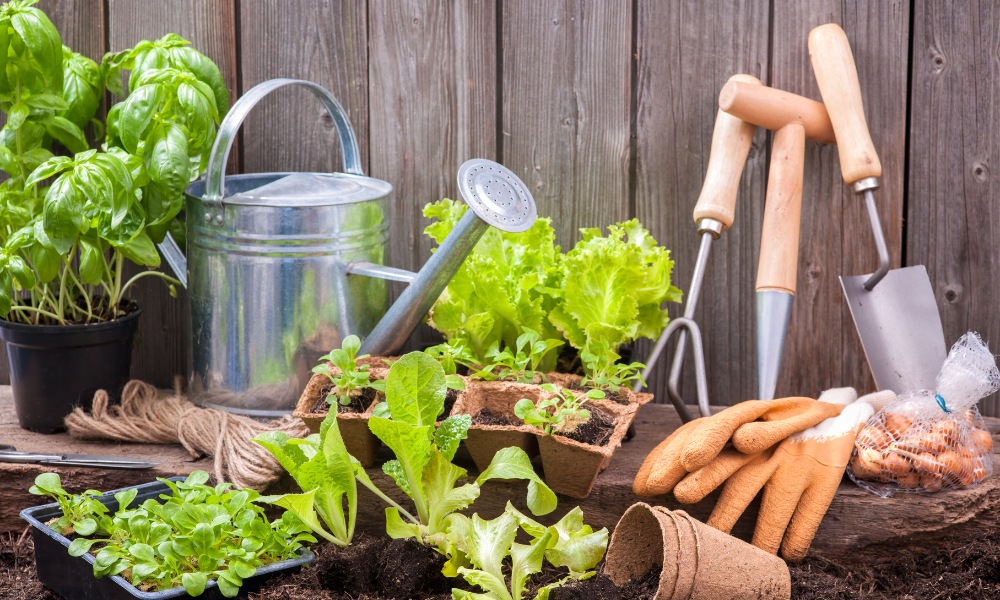
The weather in May is frequently the best of the year, with pleasant, breezy days that aren't too hot and crisp mornings that are perfect for getting outside. The May garden is full of gems worth appreciating, such as the fragrant lilacs, gorgeous bleeding hearts, and classic bearded iris.
Gardeners love May because the weather warms up and the days get longer. To make the most of this colorful season, develop a to do list for this month's various responsibilities. May gardening chores—from planting new flowers and veggies to maintaining existing plants and planning for summer—are gratifying and necessary for a healthy, thriving garden. Remember that the more effort you put in now to pull weeds, mulch, and give your plants a good start, the less you'll have to do in the hot garden in June or July.
Gardening chores in May will vary depending on your location and specific plant varieties. However, here are some gardening chores to consider for your garden in May.
1. Start Your Garden Journal
Before starting any garden chores, you must be ready with your garden journal. Keeping a garden journal allows you to track your progress throughout the season and adjust as needed.
You can download our free May garden journal. It can help you plan for next year's garden by identifying what worked well and what didn't.
2. Planting:
Planting is a crucial gardening task for the month of May, and frost has passed. It is typically a time of warmer temperatures and more consistent weather, allowing plants to thrive. It's the perfect time to get your hands dirty and start growing herbs, annual flowers, annual vines, spring bulbs, or vegetables like tomato plants or sweet peas.
Before planting your seedlings that have been planted indoors or in a greenhouse, gradually bring them to the full sun and outdoor elements. This is to avoid shock and increase their chances of survival before being planted in the ground.
What to Plant in Your Garden in May
A. Plant Vegetables:
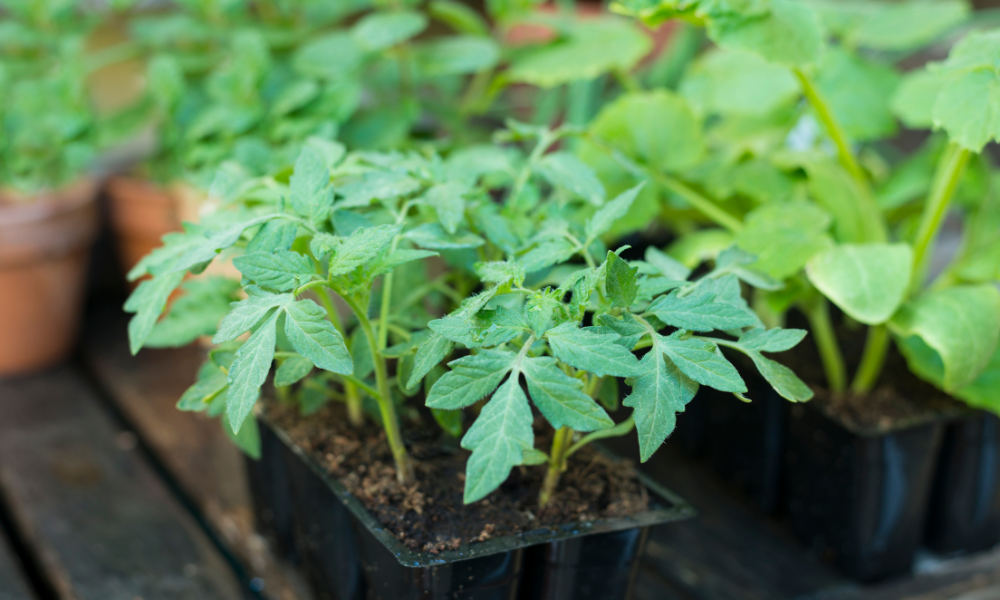
In May, you can plant various vegetables in your garden. May is the perfect time to plant tomatoes, purple sprouting broccoli, and salad crops. Set out peppers and eggplants after the soils have warmed. Plant sweet potatoes now. Begin planting sweet corn and sweet peas.
B. Plant Herbs:
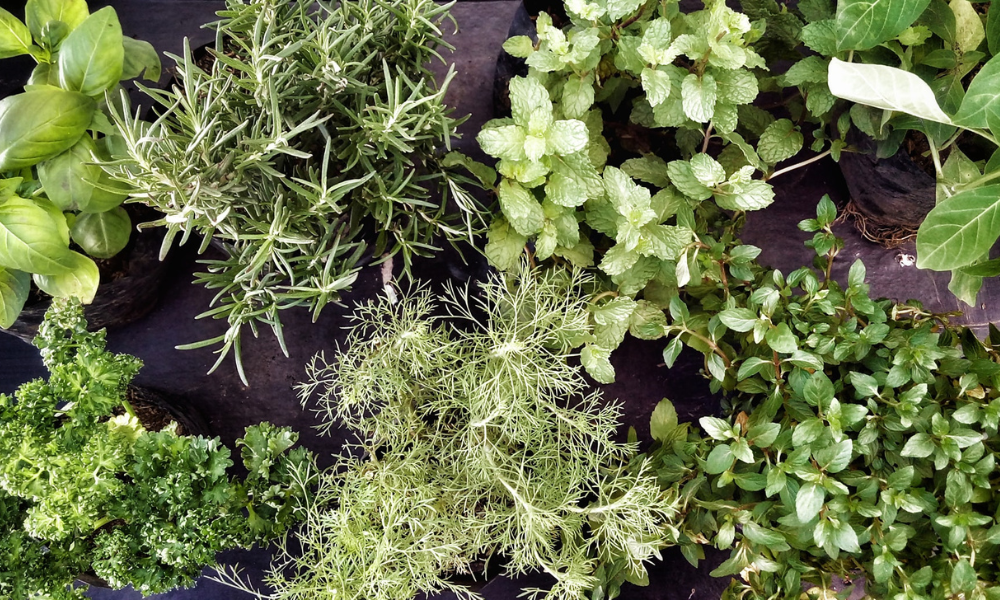
-
Sow annual herbs like basil, dill, and cilantro outdoors in well-drained soil, following the recommended planting depth and spacing on the seed packets.
-
Plant hardy perennials herbs like rosemary, thyme, and sage in well-draining soil, and select a sunny spot.
-
Plant herbs like basil and parsley in the garden or in containers or hanging baskets.
C. Plant Flowers
May is a great time to plant a variety of flowers in your garden, as the weather is usually mild and plants are starting to grow more rapidly. Follow the planting instructions for each type of flower, as some may prefer to be planted deeper than others. With proper care and maintenance, these flowers will provide beautiful blooms throughout the growing season.
Plant Spring Flowering Bulbs
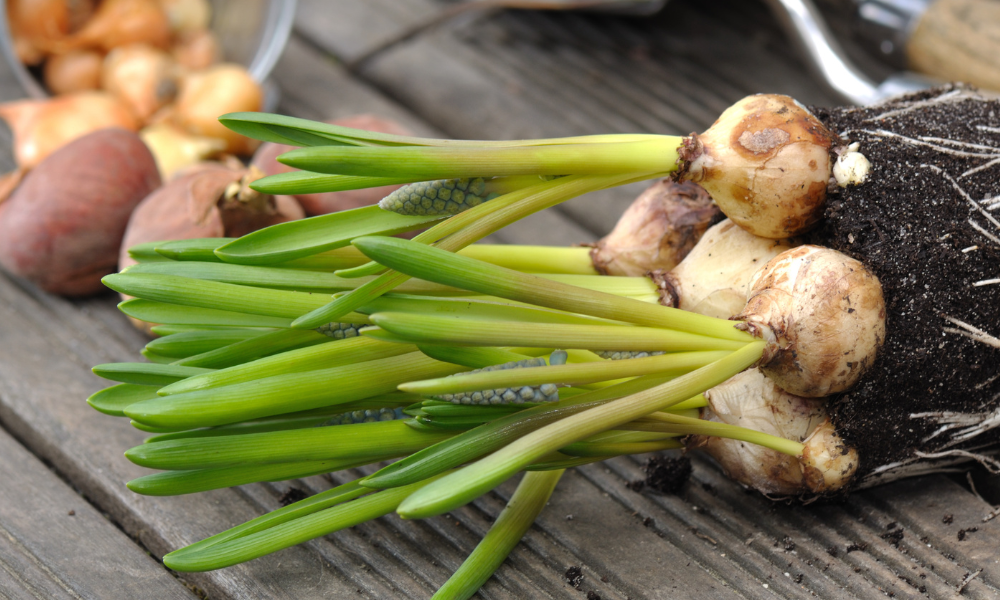
Many flowering bulbs like daffodils, tulips, and hyacinths will have already finished blooming by May. These summer-blooming bulbs and tubers need to be dug up and stored indoors over winter after the foliage dies.
Annual flowers can be planted early in the month, but wait until after your last frost to plant tender annuals.
Plant summer bulbs
Summer bulbs are a great way to add color and interest to your garden during the summer months. Gladioli, lilies, and dahlias are examples of summer bulbs. Plant in a well-drained soil and ensure they receive adequate sunlight.
Plant Bedding Plants
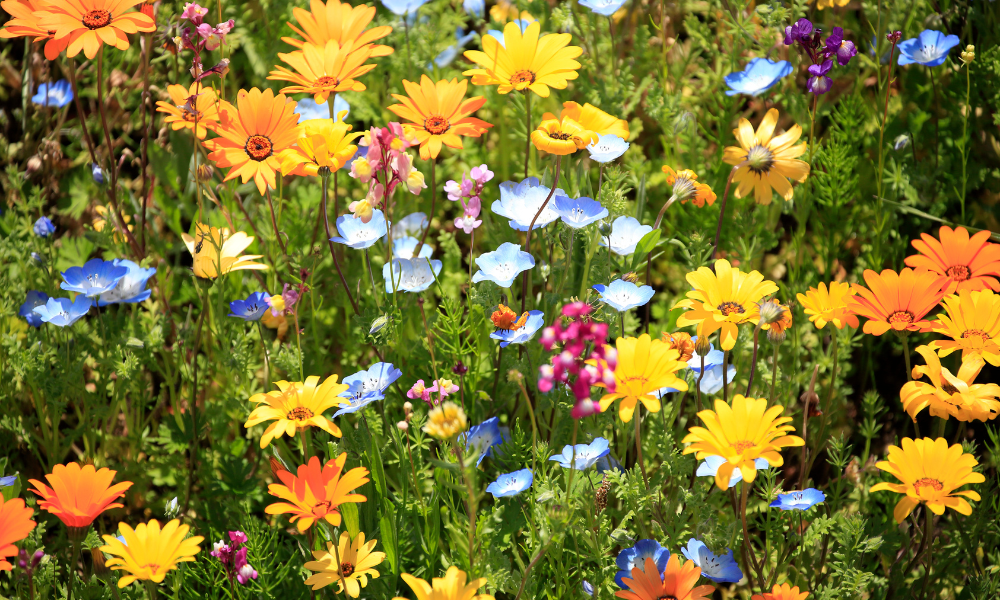
You can choose from many bedding plants with unique colors, textures, and growth habits. Many plants like petunias, marigolds, zinnias, impatiens, begonias, pansies, salvia, and snapdragons are perfect for growing bedding plants. You can select the ones that suit your garden design and growing conditions.
3. Sowing Seeds
May is a good time to sow warm-season vegetables and flowers, as the soil has warmed up, and there is less risk of frost. The types of seeds perfect for directing sow in May will depend on your location and the weather conditions.
Beans, sweet corn, cucumbers, melons, squash, sunflowers, and zucchini are some seeds that can be sown directly into the soil in May.
Do not use the seeds in one go. Seed some crops, a little at a time. The contents can be easily removed from the package, but planting a small quantity is better. Ensure the location has well-draining soil and adequate watering.
Always check the seed packet for specific planting instructions, as different varieties of the same crop may have slightly different requirements.
4. Watch for Late Frost:
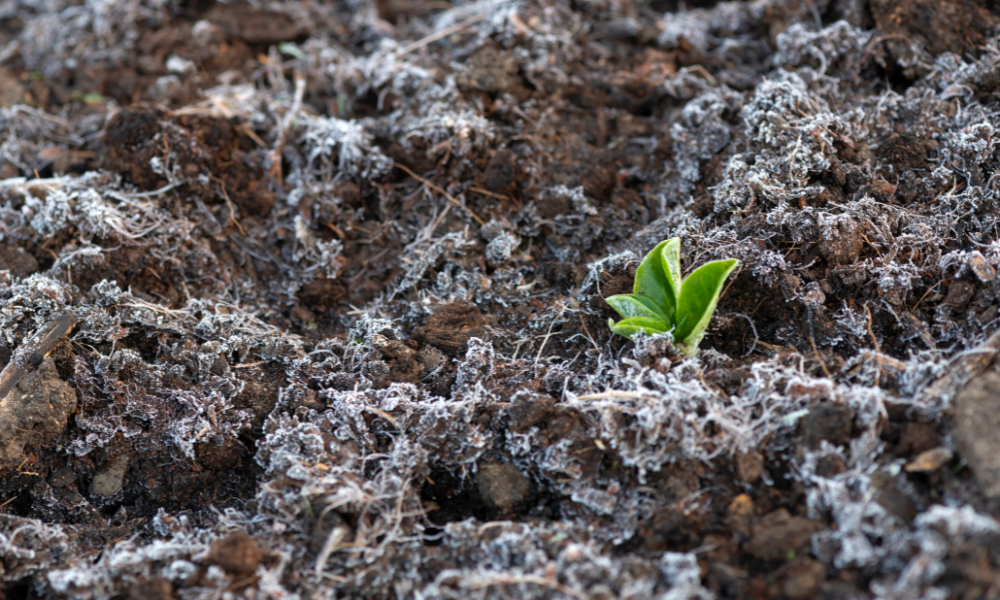
In cooler climates or higher elevations, May frost can occur. These frosts can damage tender new growth, especially those sensitive to freezing temperatures. Check your local forecast for late May frosts. Most weather services issue frost data and freezing temperature alerts to protect your tender plants. Late frosts are unexpected, but you can watch the weather and protect your plants if necessary.
5. Prune Spring Flowering Shrubs:
If you have shrubs that bloom in the spring, such as lilacs or forsythia, prune them back after they have finished flowering. Prune flowering shrubs after they finish blooming.
Remember that pruning can encourage growth. So by pruning the shrub after it has blossomed, you are encouraging it to develop new growth that will carry the blossoms for the next year. Always be patient with your plants and allow them to recover from pruning. Your garden is a living, growing work of art, and it cannot be rushed like all works of art.
Hardy Garden offers one of the best pruners in the market to ensure you keep your plants in good shape.
6. Mulch Garden Beds:
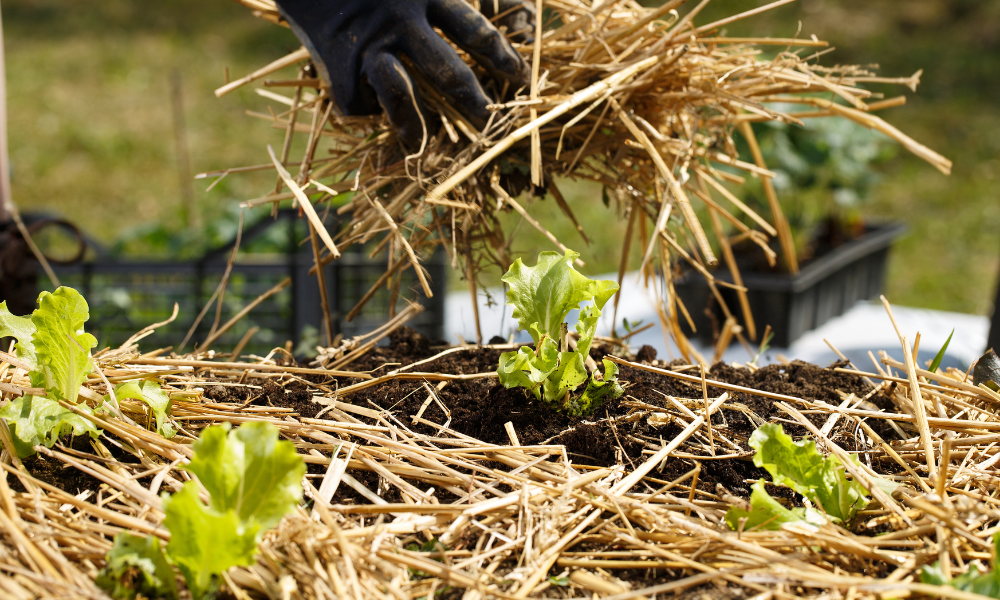
Bare soil can lead to erosion, loss of soil nutrients, and reduced water retention, so it is essential to keep it covered with either plants or mulch. In warmer weather, mulching garden beds helps retain moisture, reduce weeds, and regulate soil temperature.
Organic mulches such as straw, bark, grass clippings or compost can also improve soil fertility. They decompose faster so you can add new plants every spring without having to dig through mulch.
7. Cultivating
When cultivating a garden, paying attention to other plants in the area is important. As plants grow, new shoots may emerge that need to be trained or pruned to maintain their shape and prevent damage to surrounding plants. Some may need to be removed or relocated to allow for optimal growth. This is particularly important for climbing plants, such as vines and trellised plants, which can quickly become tangled and invasive if not properly managed.
8. Fertilize Plants:
When planting new seeds or transplants in May, it's important to provide them with the nutrients they need to grow and thrive. Fertilize your plants with a slow-release fertilizer to give them the nutrients they need to thrive. Continue fertilizing at regular intervals to ensure healthy growth; Neptune's Harvest is a perfect choice
For newly planted seeds, it's important to avoid using a fertilizer that is too strong, as this can burn the delicate roots. Instead, use a gentle fertilizer such as a balanced, organic option high in phosphorus, promoting root growth. Sprinkle the fertilizer over the soil before planting the seeds, then gently mix it in.
Different plants have different fertilizer requirements. For example, vegetables such as tomatoes and peppers benefit from a fertilizer that is higher in phosphorus, while leafy greens such as lettuce and spinach benefit from a fertilizer that is higher in nitrogen. On the other hand, flowers benefit from a higher potassium fertilizer, promoting healthy blooms. Check the specific fertilizer requirements for each type of plant and apply accordingly.
Additionally, be careful not to over-fertilize, as this can lead to excessive growth, burning of the roots, or even environmental damage.
9. Weed Control:
Keep on top of weed growth by removing them as soon as they appear. This will help prevent them from spreading and competing with your plants for resources. Stay on top of weeds before they become established. Pull them out by hand or use a hoe or other garden tool to remove them. Using a weed barrier before planting is another option to control the weeds taking over your garden.
10. Watering:
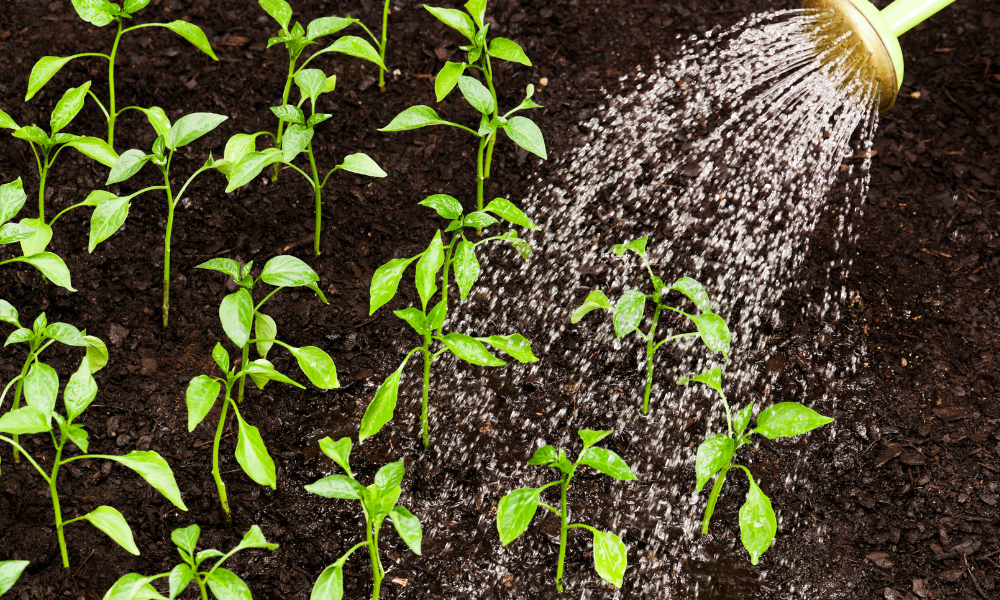
Plants will need more water as hot weather and temperatures rise. Ensure your plants are getting enough water, especially if you live in a dry climate or experience periods of drought. Soaker hose is a perfect watering system, it delivers a gentle yet steady stream of water directly to your plants' roots.
Water your plants deeply and consistently, especially during the summer months. Be mindful of your plants' watering needs and adjust your schedule accordingly.
11. Train Climbing Plants:
Choose a sturdy support structure, such as a trellis obelisk, to train a climbing plant. You can also place support stakes during planting time. The plant's tendrils should be gently guided towards the structure and tied to it using garden twine or soft plant ties, ensuring that the ties are not too tight and adjusted as the plant grows.
12. Check for Pests:
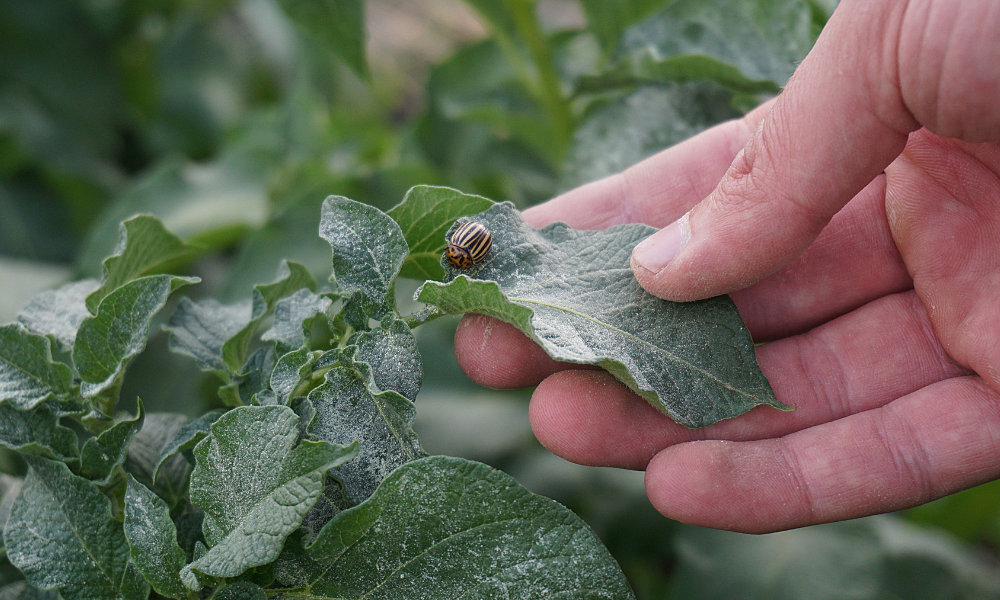
Look for any signs of pest infestations, such as chewed leaves or yellowing foliage. Take action quickly to prevent the problem from getting worse. Regularly inspect your plants for signs of pests like aphids and other pests. Also, consider companion planting to help deter pests and promote healthy plant growth.
In conclusion, May is an exciting time for gardening as you can finally get your hands dirty and plant gardens for the summer. Whether planting vegetables, herbs, flowers, or bedding plants in your own backyard. This May gardening advice will ensure that your plants thrive.
By following our Ultimate Gardening Checklists ensures your garden is healthy and productive all season long. Don't forget to watch for frost, prune spring-flowering shrubs, mulch your garden beds, fertilize your plants, control weeds, and water your plants deeply and consistently. Also, train your climbing plants like roses to ensure they grow healthy and attractive.
If you feel unsure about what to do in your garden this month. Join our monthly newsletter; as a bonus, you’ll get the printable checklist! You'll also get helpful gardening tips sent to your inbox each month. 👇
Download the gardening checklist now. You’ll be sure to get the right things done in your garden! You'll know exactly what to do this month!
For more comprehensive gardening tips, techniques and guides visit our website and click blogs.





Share and get 15% off!
Simply share this product on one of the following social networks and you will unlock 15% off!